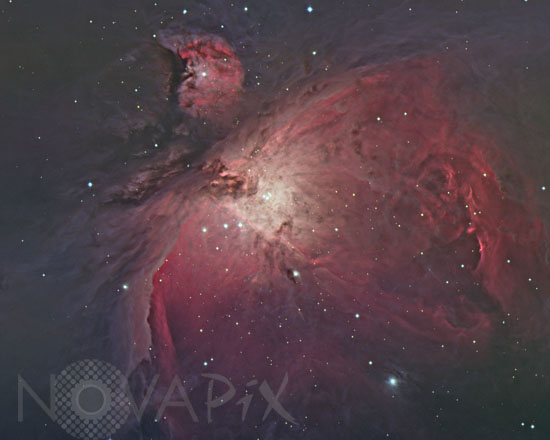Photo Agency - Astronomy - Space - Nature

The Orion Nebula, M42 and M43
author: Anglo-Australian Observatory/David Malin Images/Novapix
reference: a-neb19-76106
Image Size 300 DPI: 51 * 40 cm
The Orion Nebula is famous for a number of reasons. It is the nearest bright nebula to us and can be seen with the naked eye. Its brightness led to it being the first nebula ever photographed (in 1882) and its proximity (1500 light years) means that we know more about it than any other star-forming region. It is also in a very active stage of star formation and it is perfectly placed for us to explore the intimate details of the birth of stars. The inner regions are glowing mainly in the red light of excited hydrogen, which together with some green emission from oxygen give the centre of the nebula a yellowish colour. The energy for this spectacular display comes from the small cluster of stars in the brightest part of the nebula. Three, five-minute exposures were used to make this picture using the Anglo-Australian Telescope at Siding Spring.
Contact : Stéphane Aubin +33-(0)9-51-26-53-76
© Novapix - All rights reserved


